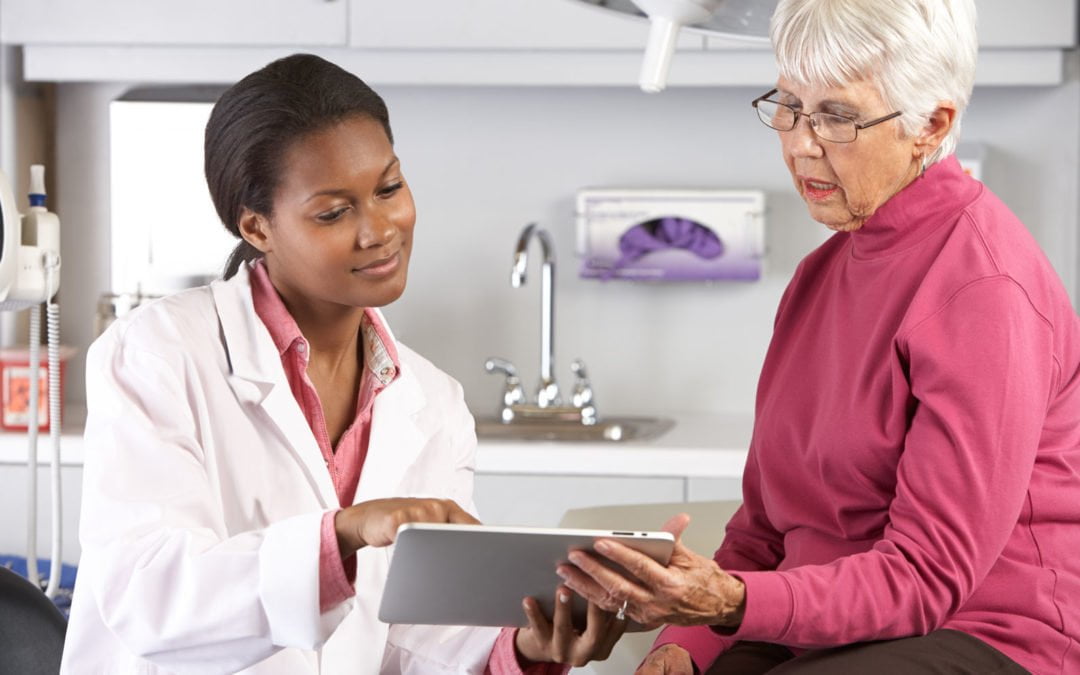As healthcare moves toward a value-based model, patient-centered care is the focus of health delivery systems. In fact, the NIH states that “patient-centered care is a key component to ensure that all patients have access to the kind of care that works for them.”
We believe at least two things bring the patient’s needs to the forefront of dermatological care: communication and digital technology. When combined, they create a healthy, comfortable environment for patients to not only see the images associated with their condition but to have detailed discussions about their treatment options.
Can looking at a digital slide make a more satisfied patient? The truth is that it certainly helps.
Based on groundbreaking research, a study published by the Institute of Medicine of the National Academies found that “communicating the importance of medical evidence and a balanced representation of options is the first step toward accelerating patient engagement in shared decision making.”
As many dermatopathology labs transition to digital technologies, doctors can use whole-slide images and viewers to visually supplement their discussions with patients and provide a deeper understanding of their diagnosis and treatment options.
“If either the patient or healthcare provider lacks [a] clear understanding of the information conveyed, the delivery of care is compromised,” explains researcher Haran Ratna in a Harvard Public Health Review.
According to the Harvard study, there is a three-pronged process for effective communication:
- Patients must feel comfortable discussing their healthcare concerns with healthcare workers.
- Healthcare workers must listen and interpret those concerns to respond appropriately.
- To prevent those complaints from recurring, workers must discuss those concerns with patients in a way that creates an understanding and empowers patients with preventative measures to maintain their health.
In a survey about communicating medical evidence, only 59 percent of surveyed patients indicated feeling “extremely comfortable” asking their provider questions. Adding a visual element such as a digital slide to the dermatologist–patient discussion can be an effective way to illustrate a patient’s condition and address concerns about treatment options. Using digital slides can improve patient comprehension, encourage shared medical decisions, and improve overall patient care.
1. Improves Patient Comprehension
When patients can see the actual diagnosis, it bolsters better doctor–patient communication. In a survey of cancer patients, 75 percent indicated they were interested in a patient–pathologist consultation program to increase their understanding of the diagnosis. Sharing whole-slide images can help pathologists to better engage with patients by pointing out areas of concern, defining medical terms, and answering questions.
“Patients with poor health literacy may not only have problems with reading, [but] they may also have problems with conceptualizing risk factors,” explains Ratna, adding that placing relevant images next to corresponding text and placing appropriate captions that highlight the areas of interest improves the readability of the patient’s materials and prepares them to help make informed decisions on their care.
2. Encourages Shared Medical Decisions
Allen-Taintor Dermatology approached PathologyWatch for ways to improve their care delivery to patients. They learned how digital pathology provided not only a faster turnaround time for a patient’s lab results (turnaround time is now 75 percent faster with results often received within two days of submission), but it also enabled their dermatologists to use a digital slide to encourage a conversation about the patient’s biopsy results and possible cancer care.
Studies show that 80 percent of patients expect their healthcare provider to share the whole truth about their diagnosis. More than two-thirds (69 percent) want their provider to be open about the risks of treatment options, so they understand how each may affect them. By seeing the diagnosis, patients can have a comprehensive and informed conversation with their healthcare provider.
3. Opens Opportunities to Improve Overall Communication Skills
Today’s technologies make it easier than ever for dermatologists to welcome open communication with their patients. But digital slides and viewers won’t replace the need for dermatologists to create a personal, trusting, and relaxed environment for their patients to discuss their patient’s concerns or questions about the images they see and the care their condition may require.
“Telling your employees about the importance of communication is not enough. Doctors and managers at your healthcare practice will need to model positive communication behavior to demonstrate how to do it,” says medical expert Simon Mikail. “After all, positive communication is a must-have if you want to enhance patient experience at your practice.”
It’s time for a new approach to dermatological care. By using digital technology services that provide fast lab results that you can share, your patients will feel seen, heard, and understood.

